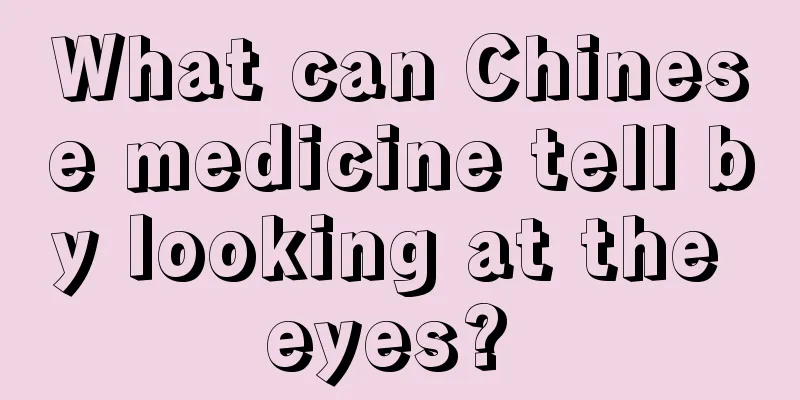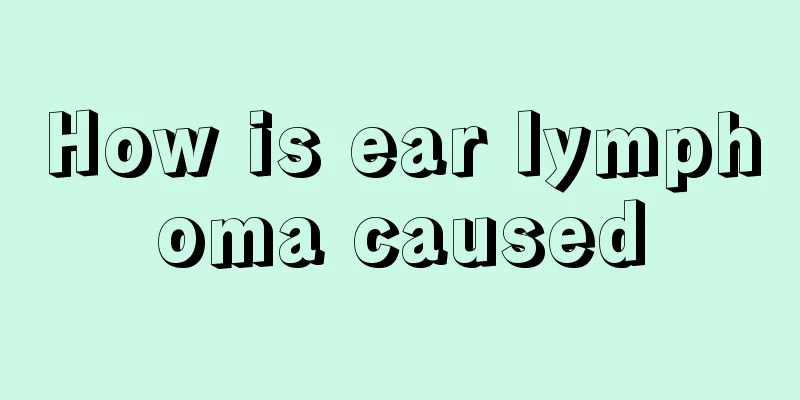What can Chinese medicine tell by looking at the eyes?

|
Traditional Chinese medicine in our country is profound and extensive, and it has been very effective in treating diseases from ancient times to the present. As we all know, when Chinese medicine practitioners treat patients, they generally focus on observation, listening, questioning and palpation. Some more experienced Chinese medicine practitioners can tell what's wrong with the patient just by looking at him. They can also combine the symptoms and conduct dialectical treatment, and the patient will usually be cured quickly. The four methods of diagnosis in traditional Chinese medicine are observation, auscultation, questioning and palpation, which are important ways to diagnose diseases. Based on the symptoms, signs and other information collected by the four methods, the diagnosis is integrated, analyzed and summarized. Starting from the overall situation, syndrome differentiation is first carried out, and then corresponding treatment is carried out according to the results of syndrome differentiation. This is one of the characteristics of traditional Chinese medicine and the basic principle of understanding and treating diseases - syndrome differentiation and treatment. "Zheng" refers to symptoms and signs, such as the patient's own feelings or the abnormal manifestations learned by the doctor through the four examinations, fever, headache, vomiting, tongue coating, pulse, etc. "Syndrome" refers to symptoms, which is a pathological summary reflected by the various symptoms manifested by the body at a certain stage in the development of the disease, and is the result of syndrome differentiation. It summarizes the factors and conditions of all aspects of the disease, determines the location and nature of the lesions, reveals the mechanism and trend of the disease, and provides treatment direction. Although the two words have different concepts, they are closely related. The process of determining the name of a disease based on its main manifestations and characteristics in clinical practice is called "disease differentiation." The determination of "disease" and "syndrome" is based on symptoms. When diagnosing diseases in traditional Chinese medicine, it involves both differentiation of disease and differentiation of syndrome. Only by identifying the syndrome based on symptoms can targeted treatment be carried out to avoid the limitations of stopping bleeding when bleeding occurs, treating the head for a headache and the foot for a foot pain. The theory of TCM syndrome differentiation is like a VIP service, which analyzes each individual and provides targeted and customized services, rather than a treatment method that uses the same medicine for the same purpose for thousands of people. Traditional Chinese medicine has a long history of knowing about hemorrhoids. During the Spring and Autumn Period and the Warring States Period, there was a record in "Classic of Mountains and Seas" that "there are many flying fish in the water, which look like carp, and eating them can cure hemorrhoids." The Yellow Emperor's Classic of Internal Medicine states that "overeating will cause the tendons and veins to tear, and the intestines to become hemorrhoids." This is the earliest discussion and discussion on the etiology of hemorrhoids in the world. It believes that hemorrhoids are caused by improper diet, abnormal bowel movements, vasodilation, bloody stools, and diarrhea with mucus. Diagnosis method For a long time, the ancients have been using traditional methods to observe changes in the eye meridians, using traditional inspection. When observing, it is best to be in a place with sufficient natural light. The patient should sit or lie flat with his eyes naturally open. Then use clean hands to gently open the patient's upper and lower eyelids to fully expose the eyeball. Observe the changes in color, location, thickness, shape, etc. of the eye veins. The main manifestation of internal hemorrhoids is the expansion, curvature, and congestion of the veins running from bottom to top near the 5/6 o'clock area of the white eye (also known as the conjunctival hemorrhoids sign). If the hemorrhoid sign appears in the left eye, it means there is hemorrhoid on the left side of the anus; if it appears in the right eye, it means there is hemorrhoid on the right side of the anus; and the number of hemorrhoid signs corresponds to the number of hemorrhoids; the thickness of the hemorrhoid sign is proportional to the size of the hemorrhoids. |
<<: What are the symptoms of HPV16 positive
Recommend
Why does my throat hurt all the time? What is the reason for long-term throat pain?
Sore throat is a very common symptom. Almost ever...
Early signs of liver cancer
Early signs of liver cancer: Clinically, there ar...
What are the benefits of drinking pocket water
Monk fruit has been very popular in recent years....
A brief analysis on how to prevent melanoma
According to recent survey statistics, there are ...
Symptoms of brain metastasis from cervical cancer
The symptoms of lung cancer brain metastasis main...
What kind of meat will not make you fat
For some people who are losing weight, no matter ...
Can molluscum contagiosum be transmitted to others?
Molluscum contagiosum is contagious, which is why...
How to lift your buttocks after childbirth?
It is said that giving birth is a catastrophe for...
How to make and clean mantis shrimp
If you want to eat a delicious meal of mantis shr...
What are urethral beads
What are urethral beads? Many young people like t...
Symptoms before relapse of pleurisy
Pleurisy generally presents as chest pain, which ...
Can sinusitis be cured by laser?
Some patients with severe sinusitis can only unde...
Is it better to have minimally invasive surgery or surgery for hernia?
Hernia refers to inguinal hernia, which requires ...
How long after fibroid surgery can I do physical work
It may take 1 to 5 months after fibroid surgery b...
Can mugwort remove moisture?
Every spring and summer when there is humidity, m...









